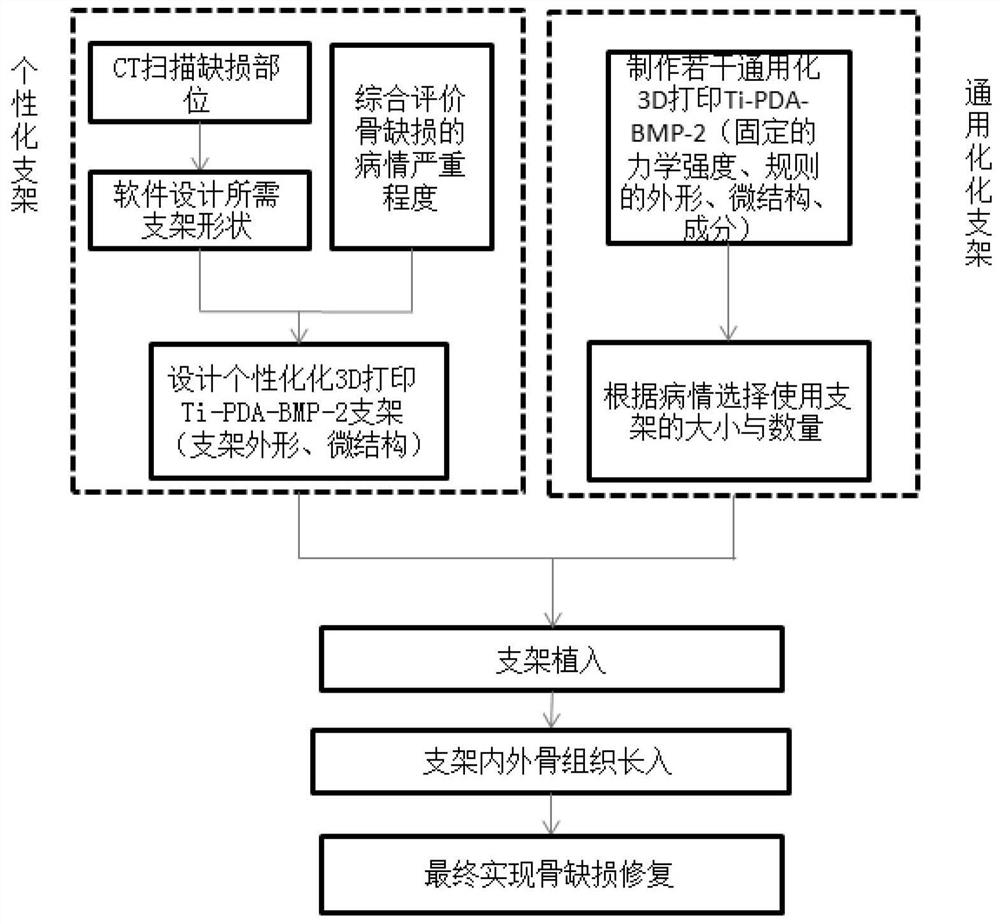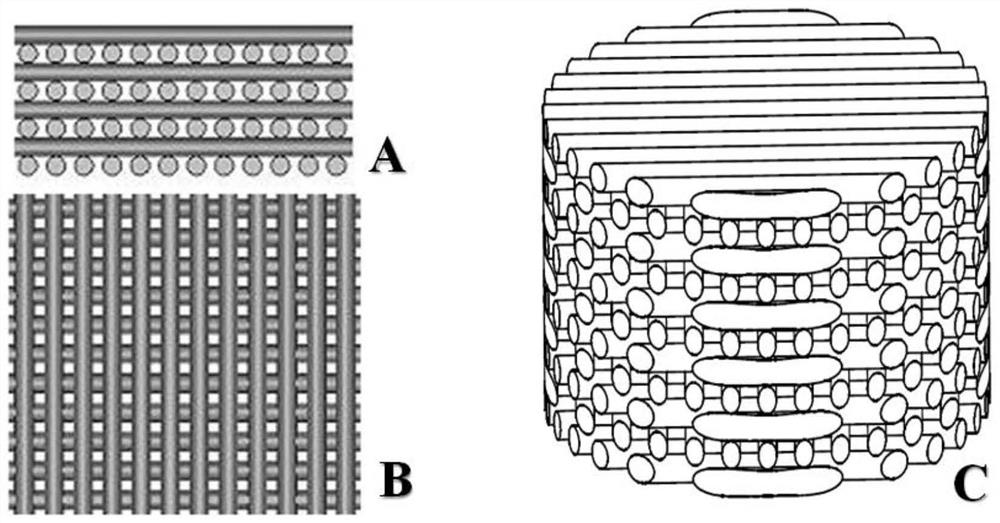3D printed ti-pda-bmp-2 bone defect repair tissue engineering scaffold and preparation method thereof
A tissue engineering scaffold, ti-pda-bmp-2 technology, applied in the field of bone tissue repair and reconstruction, can solve the problems of unguaranteed biosafety, high price, tumorigenicity, etc. Aqueous and Biocompatibility Effects
- Summary
- Abstract
- Description
- Claims
- Application Information
AI Technical Summary
Problems solved by technology
Method used
Image
Examples
Embodiment 1
[0037] 1. Preparation of 3D printed Ti scaffolds
[0038] The Ti6Al4V powder is sintered by laser to form a shaped fiber bundle, and the 3D printed Ti scaffold is obtained by stacking and splicing the fiber bundle at 0-90° or 0-60-120°, such as Figure 6 shown.
[0039] 2. Preparation of 3D printed Ti-PDA scaffold
[0040] After the stent structure is constructed by 3D printing, the surface is modified using PDA. The specific steps include:
[0041] 1) preparation concentration is the hydrochloric acid (HCL) solution of 0.5mol / L;
[0042] 2) Weigh 0.61g Tris and add it into 500ml water to dissolve, after stirring, add the prepared 0.5mol / L HCL solution drop by drop to adjust to pH=8.5, and prepare Tris-HCL solution for later use;
[0043] 3) Dopamine (DA) was dissolved in the above 150ml Tris-HCL solution, stirred and dissolved, and prepared as 2% DA-Tris-HCL solution;
[0044] 4) Add the 3D printed Ti bracket to the above solution, stir in the dark and unsealed state, 800...
PUM
| Property | Measurement | Unit |
|---|---|---|
| concentration | aaaaa | aaaaa |
| concentration | aaaaa | aaaaa |
Abstract
Description
Claims
Application Information
 Login to View More
Login to View More - R&D
- Intellectual Property
- Life Sciences
- Materials
- Tech Scout
- Unparalleled Data Quality
- Higher Quality Content
- 60% Fewer Hallucinations
Browse by: Latest US Patents, China's latest patents, Technical Efficacy Thesaurus, Application Domain, Technology Topic, Popular Technical Reports.
© 2025 PatSnap. All rights reserved.Legal|Privacy policy|Modern Slavery Act Transparency Statement|Sitemap|About US| Contact US: help@patsnap.com



